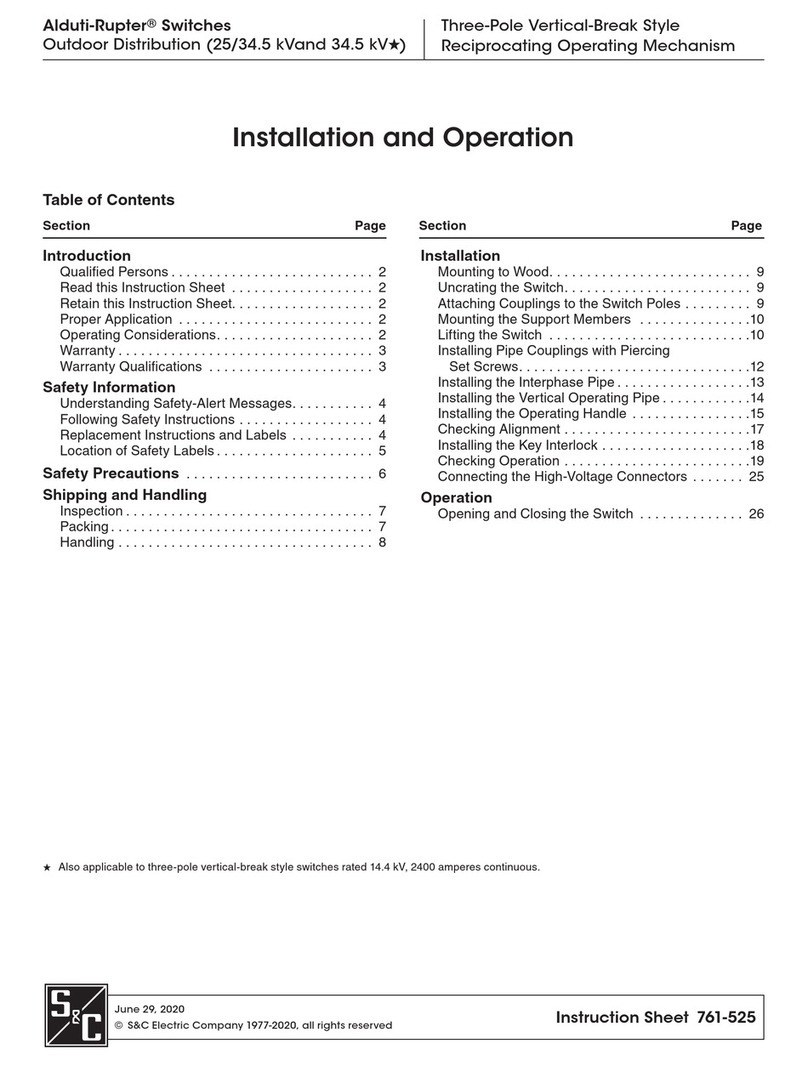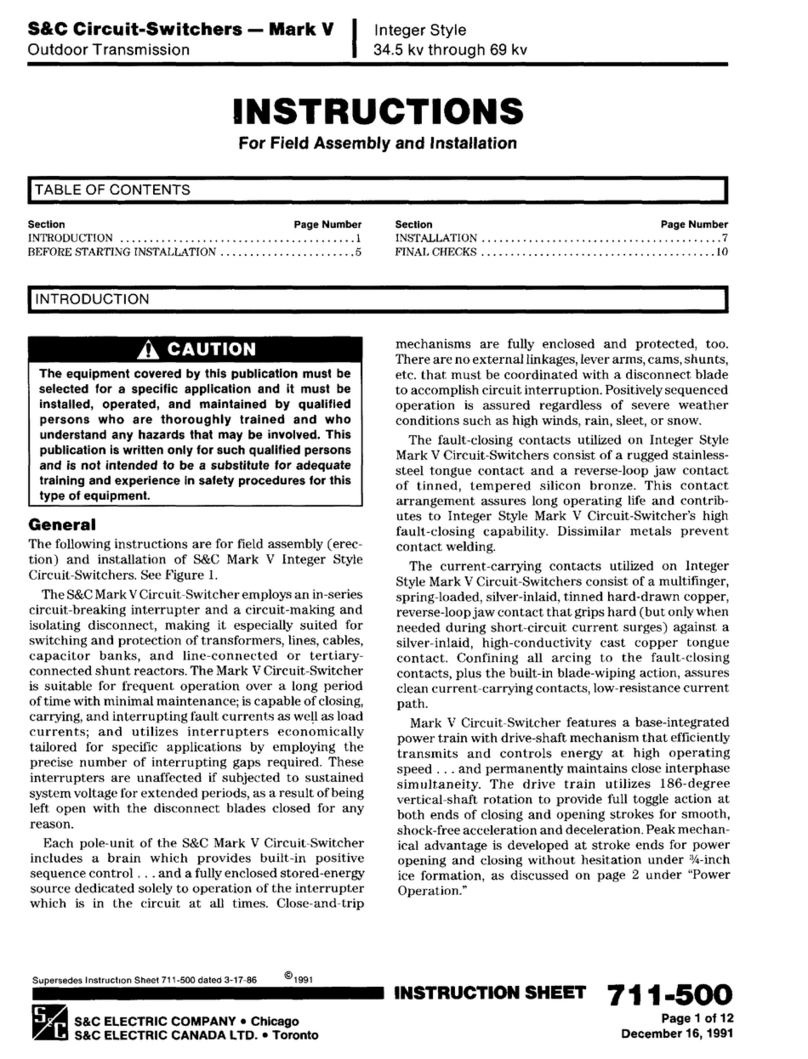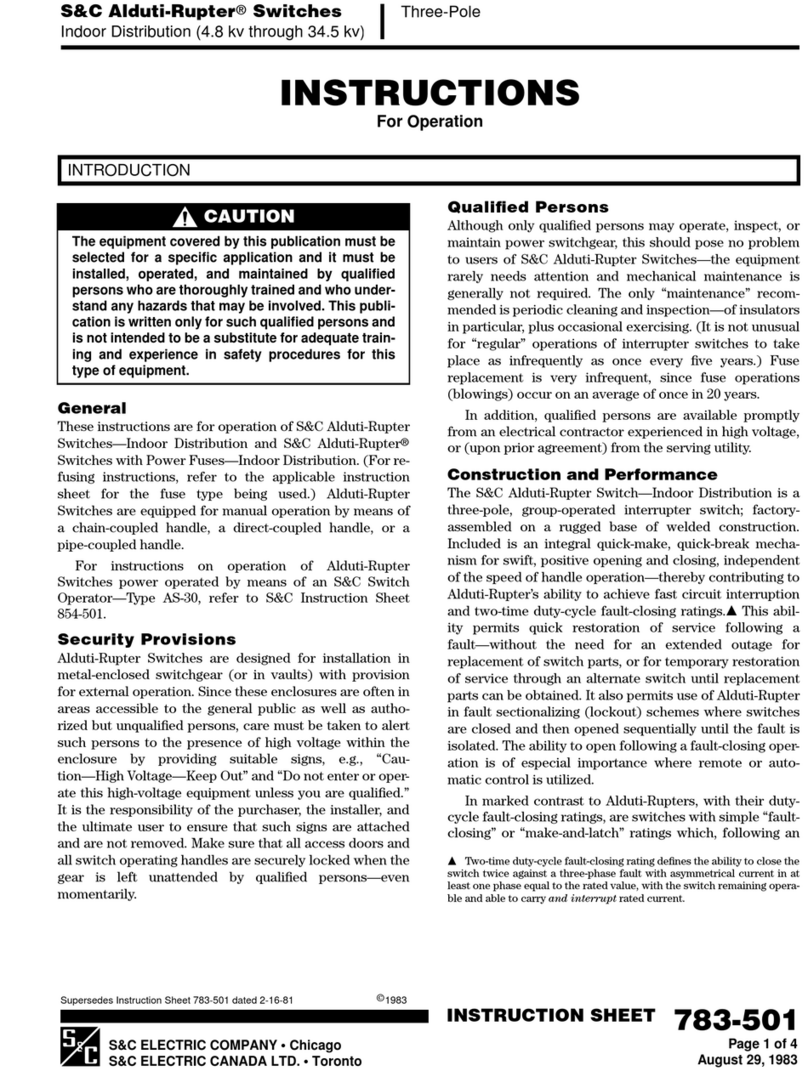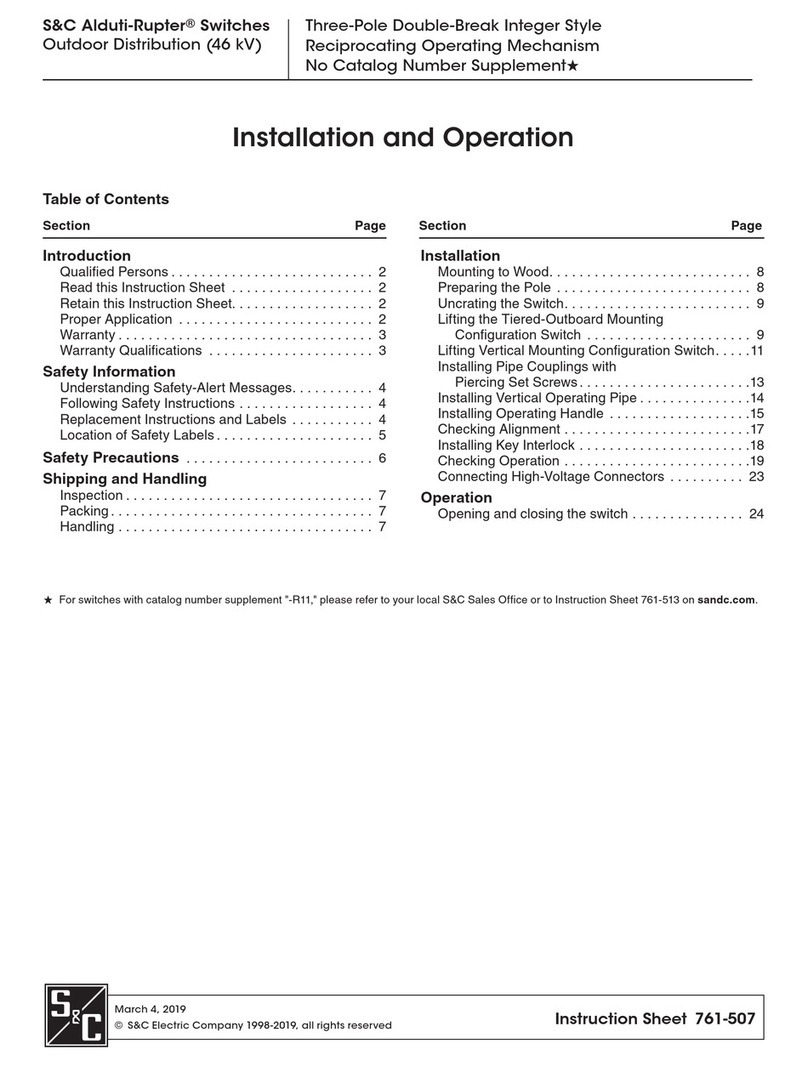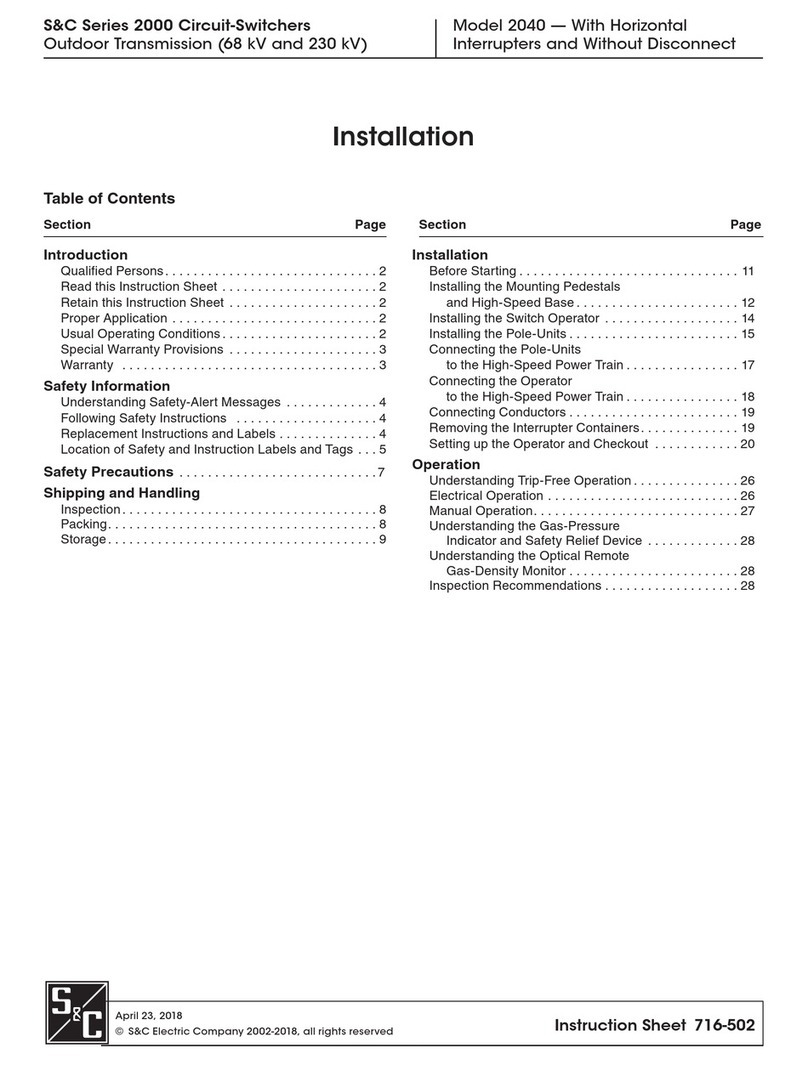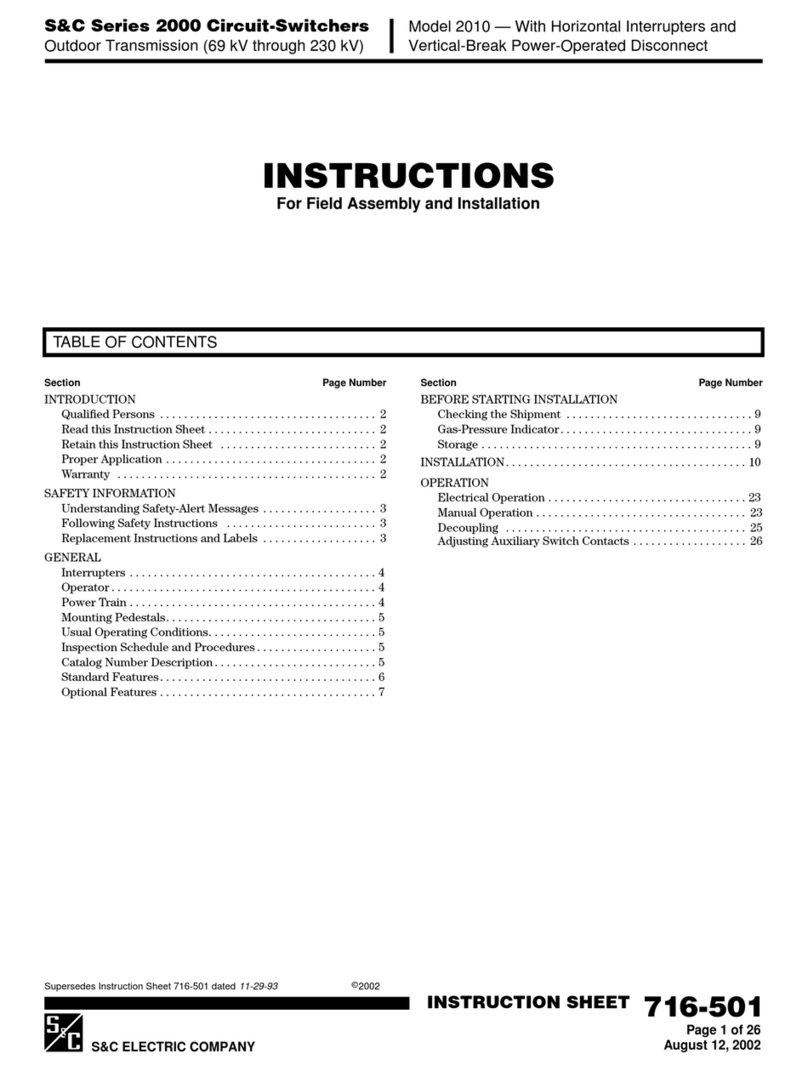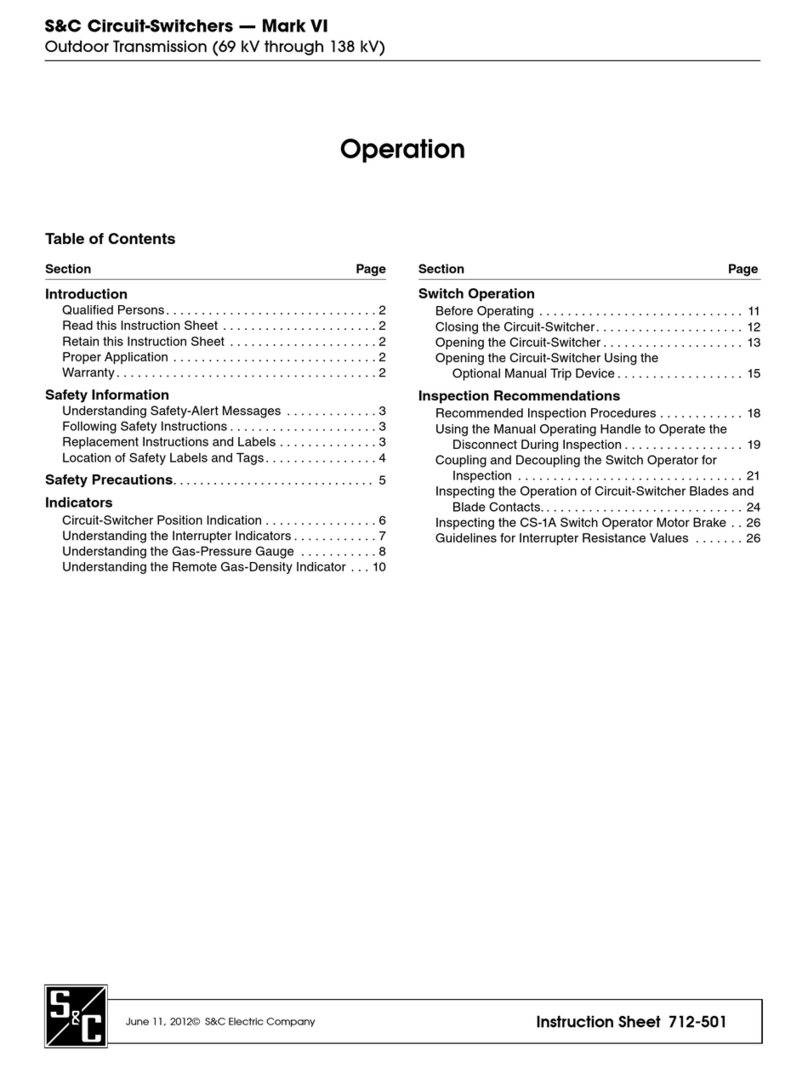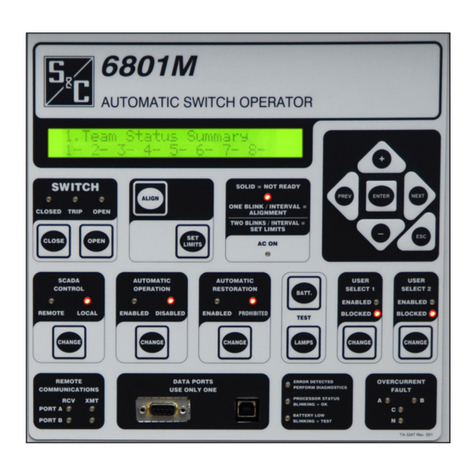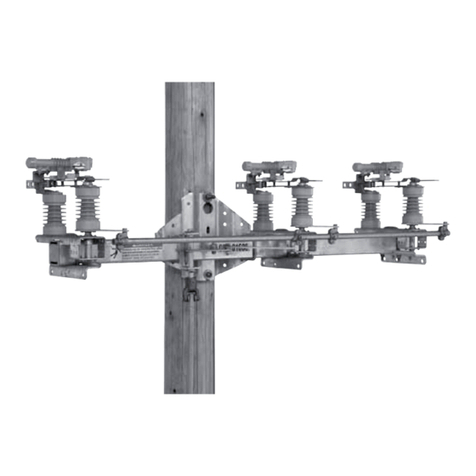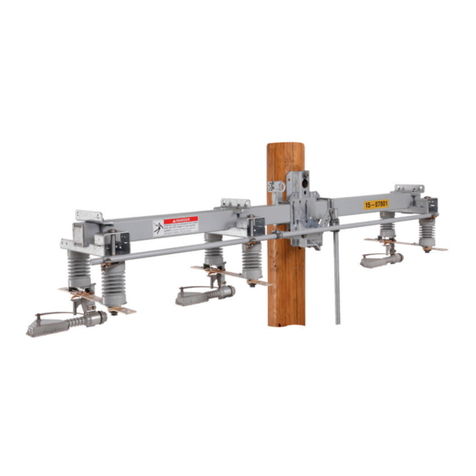
S&C Instruction Sheet 765-500 7
Packing and Inspection
Packing Study the erection drawing carefully and check the bill of material to be sure that all
parts are at hand. Standard Minor Modification parts are shown on the bill of material
under the suffix specified: “-S1,” “-S2,” “-S6,” “-S6L,” “-V1,” “-V2,” or “-V3.”
When a Standard Mounting Arrangement is specified, the shipment will include:
1. A three-pole interrupter switch, complete with interphase drive, factory-assembled
on a single base. (Upright-mounted or triangular-mounted.)
2. Four 610vertical-operating pipe sections, predrilled, where required, for attach-
ment to the universal couplings.
3. Miscellaneous mounting hardware (less through-bolts) for securing the Omni-Rupter
switch to the pole.
4. The appropriate set of operating-mechanism components for the vertical operating
pipe; e.g. handle, guide bearings, and couplings—each tagged and keyed to the bill of
material for ready identification.
5. If a Standard Minor Modification of a Standard Mounting Arrangement is specified,
the appropriate parts, as identified in the bill of materials under suffix : “-S1,” “-S2,”
“-S6,” or “-S6L” will be included with the operating-mechanism components. Specifi-
cally, the modifications designated by these suffixes are:
-S1 One tubular fiberglass insulating section in vertical operating shaft.
-S2 One Cypoxy® Insulator unit in vertical operating shaft.
-S6 Key interlock—single lock for “locked open” application.
-S6L Provisions only for key interlocks—mounting bracket for interlock.
“-V1,” “-V2,” or “-V3”—adds (one, two, or three respectively) extra 610lengths of
pipe and includes the appropriate number of extra couplings and guides.
6. A detailed erection drawing (ED) for the Omni-Rupter will be found in a water-
resistant envelope shipped with the switch. If a Standard Mounting Arrangement is
to be used, this erection drawing is a printed sheet. This same sheet is also furnished
when a Standard Minor Modification of a Standard Mounting Arrangement is to be
used. In the latter case, a copy of RD-3469 (Standard Minor Modifications, Rotating-
Type and Reciprocating-Type Operating Mechanisms) is included.
Drawings for Standard Mounting Arrangements show only minimum or suggested
locating dimensions for the vertical-operating-pipe guide bearings and the operating-
handle assembly. Specific locations are to be determined either on the job or by the
user’s engineering department.
Inspection Examine the shipment for external evidence of damage as soon after receipt as possible,
preferably before removal from the carrier’s conveyance. Check the bill of lading to make
sure that shipping skids, crates, and containers listed thereon are present:
If there is visible loss and/or damage:
1. Notify the delivering carrier immediately.
2. Ask for a carrier inspection.
3. Note condition of shipment on all copies of the delivery receipt.
4. File a claim with the carrier.
If concealed damage is discovered:
1. Notify the delivering carrier within 15 days of receipt of shipment.
2. Ask for a carrier inspection.
3. File a claim with the carrier.
Also notify S&C Electric Company in all instances of loss and/or damage.
Each integer style Omni-Rupter switch is factory-assembled on a common base. All
switch adjustments, including those of the interphase drive, are made at the factory to
ensure proper switch operation during opening and closing. Ease of installation is assured
by following these step-by-step instructions.
